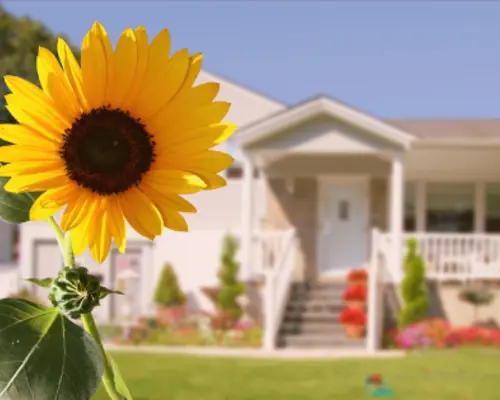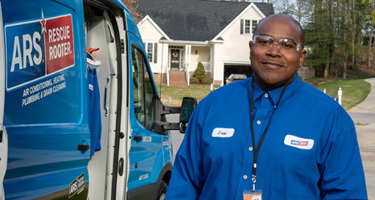
Hello, summer! As the weather heats up, you might want to consider cutting back on a few household systems that could spell BIG energy savings for the summer.
Increase Your HVAC Efficiency
- Get your HVAC serviced. Make sure to schedule your HVAC tune-up sooner rather than later. A well-serviced HVAC system doesn’t have to work as hard in hotter temperatures, reducing your system’s energy consumption up to 15 percent!
- Use ceiling fans. When the weather warms up, reverse your ceiling fans to rotate counter-clockwise. This pushes cool air down the walls towards the floor and pulls warm air up towards the ceiling. Cooling your home with ceiling fans can allow you to raise your thermostat up to 4 degrees!
- Reset your thermostat. You can save as much as 10 percent on heating by turning your thermostat up 7-10 degrees from its normal setting for 8 hours a day! The US Department of Energy recommends setting it a few degrees warmer when you’re away from home and falling back to 78 degrees only when you are at home.
- Install window treatments. On warmer days, you can slash indoor heat gain with energy-efficient window treatments such as blinds, shades, and films.
Upgrade Your Home
A new Nest thermostat is the upgrade your home needs this summer. Investing in this product will help you save energy by learning your schedule and using special features to lower your energy bill. The best part – one of our Nest Pros can install it for you and explain how to use it, step-by-step!
Decrease Your Water Usage
- Use your dishwasher. It requires more water to hand-wash dishes than it takes to wash them in the dishwasher. Save time and energy by letting your dishwasher do its job, and try to resist the urge to pre-rinse dishes before loading them.
- Streamline your showers. Limit your showers to 5 minutes and lower the temperature on your water heater to 120 degrees. Installing a low-flow showerhead can reduce your water bill by 25-60% percent.
- Find and fix hidden leaks. The average household’s leaks waste over 10,000 gallons of water every year, or the amount of water needed to wash 270 loads of laundry! To check for leaks, turn off all water-using appliances and faucets, then look at your water meter. If the flow-indicator arrow or dials are still turning, you have a leak. Contact your plumber to locate and fix it.
Wait to Wash Your Clothes
About 10 percent of a home’s total electricity goes to washing and drying clothes. Run full laundry loads instead of half loads, and try to only wash clothes when they’re actually dirty. Dry 2 or more loads in a row when possible to maximize retained heat from the previous cycle.
Cut Your Power Consumption
- Replace your light bulbs. Remember to turn off lights in rooms you’re not using! Consider replacing traditional incandescent light bulbs with energy-efficient alternatives such as Halogen incandescent bulbs, compact fluorescent lights (CFLs), and light-emitting diode bulbs (LEDs). They last up to 25 times longer and use up to 75 percent less energy.
- Use smart power strips. Electronics that are turned off still use a substantial amount of power in standby mode. These “phantom loads” can cost up to $100 a year. Prevent this by using smart power strips that shut off power to your electronics when not in use.
Refrigerate the Right Way
Your fridge is always on, making it one of your home’s most energy-consuming appliances. Maximize efficiency by keeping your refrigerator doors sealed tight, and set your fridge to 37 to 40 degrees and your freezer to 5 degrees. If you have a second fridge or freezer, only turn it on when you actually need to use it.
Do you want to know how energy-efficient your home is? Call ARS®/Rescue Rooter® today at 866-399-2885 to schedule a free, no-obligation home energy audit.






